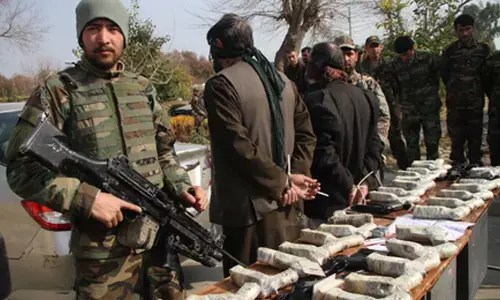Chinese not retreating, India readies for long haul

Chinese not retreating, India readies for long haul
The disengagement between India and China hit a roadblock in eastern Ladakh as Chinese troops have not moved back from the Line of Actual Control (LAC) in line with the consensus arrived at during the disengagement talks between both the countries
New Delhi : The disengagement between India and China hit a roadblock in eastern Ladakh as Chinese troops have not moved back from the Line of Actual Control (LAC) in line with the consensus arrived at during the disengagement talks between both the countries.
Seeing this, the Indian Army prepares for a long haul and harsh winter for the high-altitude region. On June 15, as many as 20 Indian soldiers and an unknown number of Chinese troops were killed in a violent clash in the Galwan Valley.
A massive logistical exercise has started to provide adequate rations and other supplies to its soldiers as the friction areas still remain volatile.
China is not complying with the roadmap for a complete pullback, which was drawn out during the Corps Commander level meet on July 14. The Chinese People's Liberation Army troops have not moved back.
The Indian security establishments said that the Chinese retreated a bit and then returned; so there is a need for "constant verification" of the consensus achieved during the meetings between the Indian and Chinese military delegates.
It has been found that the Indian and Chinese troops have pulled back at Pangong Lake by 2km and Finger 4 is empty. However, the Chinese are still camping on the ridge line. This clearly indicates that the Chinese had camped at Finger 4 that had traditionally been under the Indian control.
The Chinese had come in eight kms into the Indian territory, all the way till Finger 4 from Finger 8. India maintains that the LAC runs through Finger 8. Mountain spurs jutting into the lake are referred to as fingers.
In Galwan Valley, which is called Patrolling Point 14, distance between Indian and Chinese troops is three kms. At Patrolling Point 15, the distance between troops is around 8km.
But in Hot Springs, that is Patrolling Point 17, 40-50 troops on both sides are just 600-800 meters apart. The Chinese Army had retreated as per the consensus, but again returned.
Seeing the Chinese approach, Indian Defence Minister Rajnath Singh while reviewing the Indian Air Force's operational capabilities and deployments at forward locations on Wednesday urged the force to stand ready to handle any eventuality on the border with China.
The minister, during his visit to Ladakh last week, said that India wants peace but there is no guarantee of the final outcome of talks with China. Singh also reviewed the ground situation in the hostile border areas.














